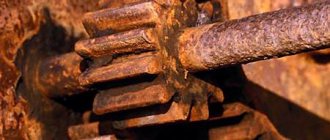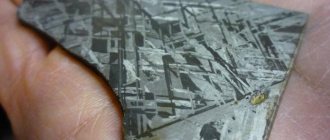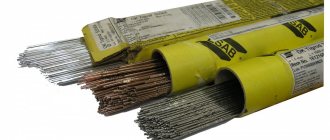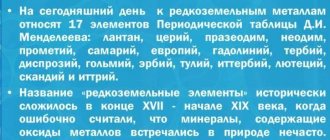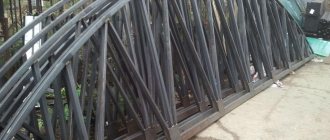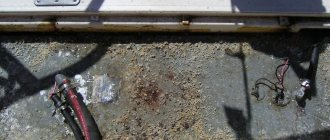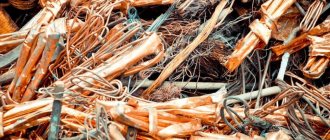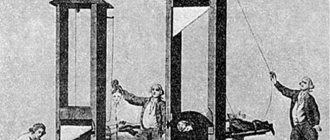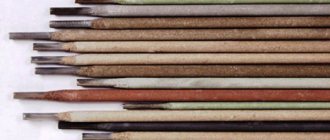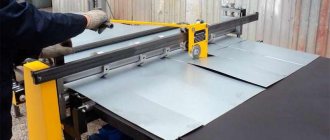Causes
Causes of corrosion processes:
- contact of different types of metals, alloys;
- frequent temperature changes;
- friction between metal surfaces;
- prolonged exposure to moisture;
- influence of acids, alkalis, chemical elements;
- use of low-quality liquids during mechanical processing of materials;
- grease stains remaining on metal surfaces after touching them.
Rust can form from periodic exposure to static or direct current.
Organosilicate coatings
For high-quality protection against corrosion, it is recommended to use metals with a high level of hydrophobicity and impermeability in water, gas and steam environments. These materials include organosilicates.
Chemical corrosion practically does not apply to organosilicate materials. The reasons for this lie in the increased chemical stability of such compositions, their resistance to light, hydrophobic properties and low water absorption. Organosilicates are also resistant to low temperatures, have good adhesive properties and wear resistance.
The problems of metal destruction due to corrosion do not disappear, despite the development of technologies to combat them. The reason is the constant increase in metal production volumes and increasingly difficult operating conditions for products made from them. It is impossible to completely solve the problem at this stage, so the efforts of scientists are focused on finding ways to slow down corrosion processes.
Kinds
Corrosion processes are classified depending on different criteria. The main ones are color, mechanism of rust formation, type of aggressive environment, nature of destruction.
By color
Depending on the color, there are different types of rust. It can be black, yellow, brown, red. The shade depends on the chemical formula of the resulting substance.
Rusty metal
Yellow
The chemical formula of yellow rust is FeO(OH)H2O. It appears under the influence of high humidity, in an environment with a small amount of oxygen. This type of rust can be seen underwater.
Brown
The chemical formula of brown rust is Fe2O3. It is extremely rare and appears without exposure to moisture.
Red
The chemical formula of red rust is Fe2O3•H2O. Formed by simultaneous exposure to water and oxygen. It is more common than other species. The destructive process proceeds evenly, gradually spreading over the entire surface.
Black
Chemical formula: Fe3O4. Appears without exposure to moisture, in an environment with a small amount of oxygen. Often used to create superconductors because it is ferromagnetic.
According to the flow mechanism
Kinds:
- chemical;
- electromechanical.
The processes differ in the mechanism of material destruction.
Chemical
The process of metal destruction, provoking the disintegration of metal bonds, the development of chemical reactions between the atoms of the material. Elements that interact with each other are not spatially separated. The rate of destruction of a part depends on the speed of the chemical reaction.
Electrochemical
This process of destruction of metal parts occurs in an electrolyte environment and is combined with the generation of current.
Rusty ship
By type of aggressive environment
Kinds:
- Atmospheric.
- Gas.
- Radiation.
- Underground.
- Contact.
- Biocorrosion.
- Electrical corrosion.
- Corrosive cavitation.
- Stress corrosion.
- Fretting corrosion.
Atmospheric
Natural process of destruction. Can occur in air or gas atmosphere. An important condition is a high level of humidity. The higher it is, the faster the material will collapse.
Gas
The process of destruction of metal parts, which occurs in a gas environment. Features low humidity levels. The process of rust formation accelerates as the temperature rises.
Radiation
Occurs under intense exposure to radiation. In high-density alloys it occurs slowly.
Underground
If a metal part lies underground for some time, you may notice a green coating or other color distortions on its surfaces. This is a consequence of oxidative processes that occur in different types of soil.
Contact
Appears quickly in places where two different metals come into contact with each other. This is due to the difference in stationary potential in the electrolyte.
Biocorrosion
The process of destruction of metal parts, which is caused by the influence of various microorganisms and their metabolic products.
Rusty shipwrecks
Corrosion by electric shock
Can occur when exposed to stray or external current. The rate at which rust spreads depends on the current strength, duration, and frequency of its impact on metal parts.
Corrosive cavitation
One of the many processes of self-destruction of different types of metals. It starts when exposed to the external environment, mechanical damage.
Stress Corrosion
The process of destruction of alloys, which occurs when mechanical stress interacts with a corrosive environment. This type of corrosion is dangerous for metal structures that are subject to heavy loads.
Fretting corrosion
A complex corrosion process that occurs under the influence of a corrosive environment with various vibrations. To prevent the formation of rust, it is important to reduce the coefficient of friction of metal parts.
By nature of destruction
Kinds:
- solid;
- selective;
- local;
- subsurface;
- intercrystalline;
- slotted.
They differ in location, degree of penetration into the material, and severity of destruction.
Solid
With this corrosion process, all metal surfaces become covered with rust. It can be uniform or uneven, depending on the rate of destruction of the material in different places of the part.
Electoral
A similar process affects one of the elements of the metal structure, which does not have an anti-corrosion coating that slows down the destruction process.
Rusty car (Photo: pixabay.com)
Local
Rust spots are scattered on the metal surface. They are recesses of different sizes, some of which may be superficial, others through.
Subsurface
Appears under metal surfaces. It quickly penetrates deep into the material. This type of corrosion process is characterized by metal delamination.
Intercrystalline
Begins to appear along the boundaries of individual grains of the material. It is extremely difficult to identify by appearance. Indicators of density, strength, and ductility quickly deteriorate. Parts become fragile.
Slotted
Formed at the junction of two metal parts. May appear in technological gaps, under technical gaskets.
Types of metal corrosion
The most common types of metal corrosion :
- Uniform – covers the entire surface evenly
- Uneven
- Electoral
- Local stains – individual areas of the surface are corroded
- Ulcerative (or pitting)
- Spot
- Intercrystalline - spreads along the boundaries of a metal crystal
- Cracking
- Subsurface
Main types of metal corrosion
From the point of view of the mechanism of the corrosion process, two main types of corrosion can be distinguished: chemical and electrochemical.
Protection methods
To protect metal surfaces from corrosion, various techniques are used. Each of them is unique and has certain characteristics.
Application of protective coating
Protective coatings can be of two types - metallic and non-metallic. Types of non-metallic coatings:
- Chemical layer. More often these are oxide films that form on the surface under the influence of steam and air. One of the oxidation options is to immerse parts in a solution of nitric acid heated to 140°C.
- Paint and varnish coatings. The main disadvantage of paint and varnish coatings is their low resistance to temperature changes and mechanical damage.
- Powder paints. They are applied using specialized equipment in closed painting booths.
- Various polymer coatings.
Definition of corrosion
Metal materials under chemical or electrochemical influence of the environment are subject to destruction, which is called corrosion.
Corrosion of metals is caused by redox reactions, as a result of which metals become oxidized and lose their properties, which renders metal materials unusable.
There are 3 signs that characterize corrosion:
- Corrosion is, from a chemical point of view, a redox process.
- Corrosion is a spontaneous process that occurs due to the instability of the thermodynamic system metal - environmental components.
- Corrosion is a process that develops mainly on the surface of the metal. However, it is possible that corrosion can penetrate deep into the metal.
Methods for removing corrosion
If rust has already appeared, it can be removed in different ways - mechanically, chemically. You can also use folk remedies.
Rusty castle (Photo: pixabay.com)
Mechanical cleaning
Involves the use of abrasive tools. Damaged parts will be cleaned by friction.
Brush on metal
It is a classic hand brush with many metal fibers used for cleaning. Suitable for partial removal of the effects of corrosion.
Gas corrosion
Gas corrosion is the most common type of chemical corrosion. At high temperatures, the metal surface is destroyed under the influence of gases. This phenomenon is observed mainly in metallurgy (equipment for hot rolling, forging, stamping, parts of internal combustion engines, etc.)
The most common case of chemical corrosion is the interaction of metal with oxygen. The process proceeds according to the reaction:
Me + 1/2O2 - MeO
The direction of this reaction (oxidation) is determined by the partial pressure of oxygen in the gas mixture (pO2) and the dissociation pressure of oxide vapor at a certain temperature (pMeO).
This chemical reaction can occur in three ways:
1) pO2 = pMeO, equilibrium reaction;
2) pO2 > pMeO, the reaction is shifted towards the formation of oxide;
3) pO2 < pMeO, the oxide dissociates into pure metal and oxide, the reaction proceeds in the opposite direction.
Knowing the partial pressure of oxygen in the gas mixture and the dissociation pressure of the oxide, it is possible to determine the temperature range at which this reaction is thermodynamically possible.
The rate of gas corrosion is determined by several factors: ambient temperature, the nature of the metal or alloy composition, the nature of the gaseous environment, the time of contact with the gaseous environment, and the properties of the corrosion products.
The process of chemical corrosion largely depends on the nature and properties of the oxide film formed on the surface.
The process of the appearance of an oxide film on the surface can be divided into two stages:
— oxygen molecules are adsorbed on the surface of the metal, which is in direct contact with the atmosphere;
- metal reacts with gas to form a chemical compound.
At the first stage, an ionic bond occurs between surface atoms and oxygen: the oxygen atom takes two electrons from the metal. This creates a very strong bond, much stronger than the bond between oxygen and the metal in the oxide. Perhaps this phenomenon is observed due to the effect on oxygen of the field created by metal atoms. After complete saturation of the surface with the oxidizer, which occurs almost instantly, at low temperatures, due to Van der Waltz forces, physical adsorption of oxidant molecules can be observed.
As a result, a very thin monomolecular protective film is formed, which thickens over time, making it difficult for oxygen to reach.
At the second stage, due to chemical interaction, the oxidizing component of the medium takes away valence electrons from the metal and reacts with it, forming a corrosion product.
If the resulting oxide film has good protective properties, it will inhibit the further development of the chemical corrosion process. In addition, the oxide film greatly affects the heat resistance of the metal.
There are three types of films that can form:
- thin (invisible to the naked eye);
- medium (gives tarnished colors);
- thick (clearly visible).
In order for the oxide film to be protective, it must meet certain requirements: have no pores, be continuous, adhere well to the surface, be chemically inert in relation to its environment, have high hardness, and be wear-resistant.
If the film is loose and porous, and also has poor adhesion to the surface, it will not have protective properties.
There is a continuity condition, which is formulated as follows: the molecular volume of the oxide film must be greater than the atomic volume of the metal .
Continuity is the ability of the oxide to cover the entire surface of the metal with a continuous layer.
If this condition is met, then the film is continuous and, accordingly, protective.
But there are metals for which the continuity condition is not an indicator. These include all alkaline, alkaline earth (except beryllium), even magnesium, which is important technically.
To determine the thickness of the oxide film formed on the surface and study its protective properties, many methods are used. The protective ability of a film can be determined during its formation, by the rate of metal oxidation and the nature of the rate change over time. If the oxide has already formed, it is advisable to study the thickness and its protective properties by applying some reagent suitable for this case to the surface (for example, a solution of Cu(NO3)2, which is used for iron). By the time of penetration of the reagent to the surface, the thickness of the film can be determined.
Even the already formed continuous film does not stop its interaction with the metal and the oxidizing environment.
The influence of external and internal factors on the rate of chemical corrosion.
Temperature has a very strong influence on the rate of chemical corrosion. When it increases, oxidation processes occur much faster. In this case, the decrease in the thermodynamic possibility of the reaction occurring has no significance.
Variable heating and cooling have a particularly strong effect. Cracks form in the protective film due to the appearance of thermal stresses. Through cracks, the oxidizing component of the medium has direct access to the surface. A new oxide film is formed, and the old one gradually peels off.
The composition of the gas environment plays a major role in the corrosion process. But this is individual for each metal and changes with temperature fluctuations. For example, copper corrodes very quickly in an oxygen atmosphere, but is stable in an environment containing SO2. Nickel, on the contrary, corrodes intensively upon contact with an SO2 atmosphere, but is stable in O2, CO2 and H2O environments. Chromium is relatively stable in all four environments.
If the oxide dissociation pressure is higher than the pressure of the oxidizing component, the oxidation of the metal stops and it becomes thermodynamically stable.
The rate of oxidation depends on the composition of the alloy. Let's take iron, for example. Additions of sulfur, manganese, phosphorus and nickel do not affect its oxidation. Silicon, chromium, aluminum slow down the process. And beryllium, cobalt, titanium and copper greatly inhibit oxidation. At high temperatures, tungsten, molybdenum, and vanadium can intensify the process. This is explained by the volatility or fusibility of their oxides.
Observing the rate of iron oxidation at different temperatures, we note that with increasing temperature, the slowest oxidation is observed with an austenitic structure. It is the most heat-resistant compared to others.
The rate of chemical corrosion is also influenced by the nature of surface treatment. If the surface is smooth, then it oxidizes a little slower than a bumpy surface with defects.
Recommendations
Adviсe:
- It is better not to skimp on protecting parts and cover them with rubber or polymer paint.
- Before using abrasives, you should try to remove rust with gentle compounds.
- Complex corrosion processes can be stopped with the help of aggressive chemicals, but before using them, you need to study the properties of the composition and the characteristics of the metal in order to prevent possible negative reactions.
Immediately after removing rust, surfaces should be coated with a protective compound to reduce the risk of corrosion re-spread.
Corrosive processes can quickly destroy any material. Damage to metal structures in some situations can have catastrophic consequences. Having studied the methods of protection against corrosion, you need to use one of the most suitable ones.
Electrochemical corrosion of metals
Electrochemical corrosion of metals is the process of destruction of metals in the environment of various electrolytes, which is accompanied by the appearance of an electric current inside the system.
With this type of corrosion, an atom is removed from the crystal lattice as a result of two coupled processes :
- Anodic - metal in the form of ions goes into solution.
- Cathode – the electrons formed during the anodic process are bound by a depolarizer (the substance is an oxidizing agent).
The process of removing electrons from the cathode sites is called depolarization , and substances that promote removal are called depolarizers.
The most common corrosion of metals is with hydrogen and oxygen depolarization .
Hydrogen depolarization
Hydrogen depolarization is carried out at the cathode during electrochemical corrosion in an acidic environment :
2H++2e— = H2 discharge of hydrogen ions
2H3O++2e— = H2 + 2H2O
Oxygen depolarization
Oxygen depolarization is carried out at the cathode during electrochemical corrosion in a neutral environment :
O2 + 4H++4e— = H2O reduction of dissolved oxygen
O2 + 2H2O + 4e— = 4OH—
All metals, in their relation to electrochemical corrosion, can be divided into 4 groups, which are determined by the values of their standard electrode potentials:
- Active metals (high thermodynamic instability) are all metals in the range of alkali metals - cadmium (E0 = -0.4 V). Their corrosion is possible even in neutral aqueous environments in which there is no oxygen or other oxidizing agents.
- Metals of medium activity (thermodynamic instability) are located between cadmium and hydrogen (E0 = 0.0 V). In neutral environments, in the absence of oxygen, they do not corrode, but are subject to corrosion in acidic environments.
- Low-active metals (intermediate thermodynamic stability) - are located between hydrogen and rhodium (E0 = +0.8 V). They are resistant to corrosion in neutral and acidic environments in which there is no oxygen or other oxidizing agents.
- Noble metals (high thermodynamic stability) - gold, platinum, iridium, palladium. They can be subject to corrosion only in acidic environments in the presence of strong oxidizing agents.
Types of electrochemical corrosion
Electrochemical corrosion can occur in various environments. Depending on the nature of the environment, the following types of electrochemical corrosion are distinguished:
- Corrosion in electrolyte solutions - in solutions of acids, bases, salts, in natural water.
- Atmospheric corrosion - in atmospheric conditions and in any humid gas environment. This is the most common type of corrosion.
For example, when iron interacts with environmental components, some of its sections serve as the anode, where iron oxidation occurs, and others serve as the cathode, where oxygen reduction occurs:
A: Fe – 2e— = Fe2+
K: O2 + 4H+ + 4e— = 2H2O
The cathode is the surface where the oxygen flow is greater.
- Soil corrosion - depending on the composition of the soil, as well as its aeration, corrosion can occur more or less intensely. Acidic soils are the most aggressive, while sandy soils are the least.
- Aeration corrosion occurs when there is uneven access of air to different parts of the material.
- Marine corrosion - occurs in sea water due to the presence of dissolved salts, gases and organic substances in it .
- Biocorrosion - occurs as a result of the activity of bacteria and other organisms that produce gases such as CO2, H2S, etc., which contribute to metal corrosion.
- Electrocorrosion - occurs under the influence of stray currents in underground structures, as a result of the work of electric railways, tram lines and other units.
Chemical corrosion
Chemical corrosion is possible due to the thermodynamic instability of metals. Gas corrosion, having its own definition, is a type of chemical corrosion. The latter have the ability to independently transform into a much more stable state at the end of the reaction: metal + oxidizing agent → reaction product.
The most common example of chemical corrosion of a metal is a reaction with oxygen:
Me+0.5O2→MeO
4Fe+3O2→2Fe2O3
Decarburization of steel as gas corrosion:
Fe3C+2H2→3FeCH4
